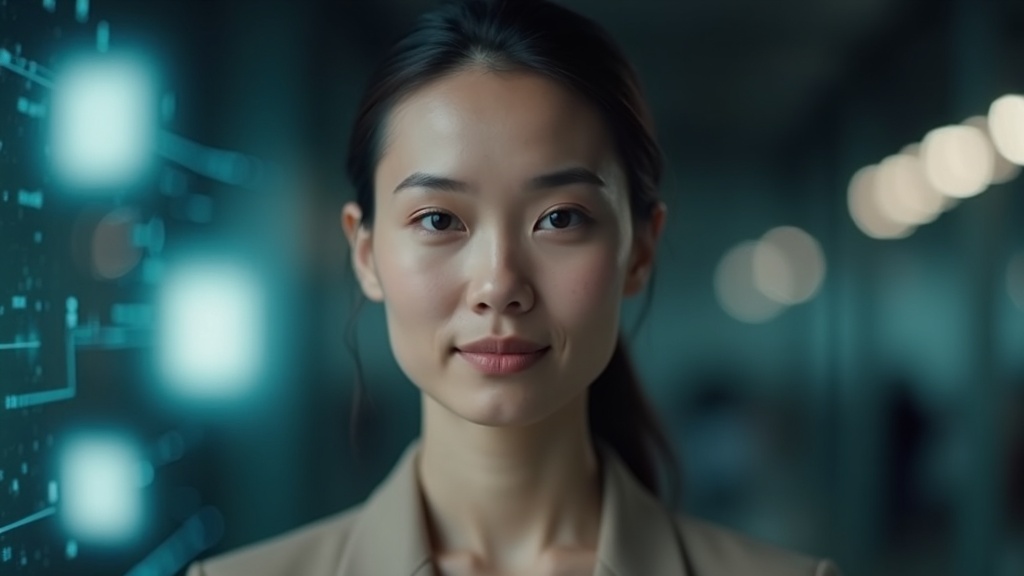Protect Your Likeness: A Practical Guide to AI Portrait Privacy

This image was created in the BlendMe.ai app.

Introduction
AI portrait tools are reshaping how we present ourselves online — from polished LinkedIn headshots to animated micro-videos — but with this convenience comes a major question: how do you keep your likeness safe? Whether you’re exploring AI-generated portraits for professional photos or social profiles, it helps to know the privacy trade-offs and best practices. BlendMe.ai (https://blendme.ai) is one example of a platform that emphasizes secure processing and user control — but every user should take proactive steps to protect their images.
Why privacy matters now
AI portrait generation requires personal photos to train a model that reproduces your face. That capability is powerful but sensitive: a model tied to your likeness can be misused if stored or shared improperly. Many people are understandably wary of biometric misuse, identity theft, or unauthorized deepfakes. The good news: with the right safeguards, you can enjoy the creative benefits of AI portraits while minimizing risk.
Key privacy principles to understand:
- Data minimization: share only what’s necessary to achieve the result.
- Purpose limitation: your images should be used only for the stated feature (e.g., your personalized model).
- User control: you should be able to delete the model and raw photos.
How BlendMe.ai approaches security (what to look for in any provider)
When evaluating AI portrait services, check whether the product offers:
- Secure upload & processing: encrypted transfers and isolated processing environments.
- Model ownership and usage limits: the provider should state that models are created for you and not used to train public datasets.
- Clear retention policies and deletion controls: you need the ability to remove raw photos and the trained model.
- No third-party sharing: strict policies about not selling or sharing your biometric data.
BlendMe.ai, for example, processes uploads securely and commits to using photos only to build the user’s model — a useful baseline for anyone considering AI portrait tools.
Practical steps to protect your likeness (step-by-step)
-
Vet the provider
- Read the privacy policy and terms of service before uploading. Look specifically for language about biometric data, model reuse, and third-party sharing.
-
Limit what you upload
- You don’t always need dozens of photos. Use the minimum recommended set, and avoid uploading sensitive background images or documents inadvertently captured in shots.
-
Use unique photos for model training
- If you’re worried about cross-platform tracking, use a specific subset of photos for AI tools that’s different from the images you publish publicly.
-
Check retention & deletion tools
- After generating your portraits, verify you can delete both raw uploads and the trained model permanently. If deletion is manual, keep records of requests.
-
Manage sharing and exports
- Prefer downloading high-resolution outputs to your device and removing them from cloud galleries if you don’t need them stored online.
-
Protect your account
- Enable strong passwords and two-factor authentication on the service to prevent unauthorized access.
-
Watermark and control distribution
- For sensitive images you post, consider subtle branding or contextual captions so images are less likely to be misused out of context.
Real-life scenarios: how privacy steps apply
-
Freelancer updating portfolio: Upload only a dedicated batch of clean headshots, delete the raw photos after generating the final outputs, and keep low-sensitivity profile versions for public pages.
-
Dating app user: Use the platform’s style presets, download optimized images, and avoid storing raw facial datasets on shared cloud folders.
-
Creator making micro-videos: Train a model on neutral backgrounds, export videos to your device, and revoke access to the trained model once you’ve created the content you need.
FAQs
Can an AI portrait service reuse my photos to train other models?
Not if the provider’s policy prohibits it. Look for explicit language that your uploads are used only to create your private model and are not added to public training datasets.
What should I do if I suspect misuse?
Immediately contact the service’s support and request deletion of the model and your raw images. Document the request and follow up. If the platform doesn’t respond, check local data protection authorities for further steps.
Is deletion always permanent?
Policies vary. Some platforms fully purge backups after a retention period; others may archive for a fixed time. Verify the provider’s retention windows and deletion guarantees.
Final note: balance creativity with control
AI portrait tools unlock huge creative possibilities — from consistent brand images to animated micro-videos — but they require informed use. By choosing vendors with clear privacy practices, limiting uploads, and exercising deletion and account controls, you can enjoy AI-powered imagery responsibly. BlendMe.ai is built with secure processing and user-first policies in mind, making it a practical option for people who want control over how their likeness is used.
Ready to refresh your visual identity with both creativity and control? Download the app to get started and keep your likeness protected while you create.